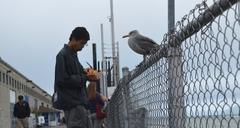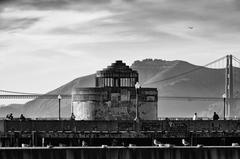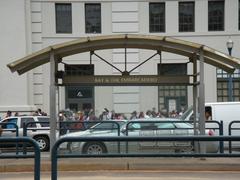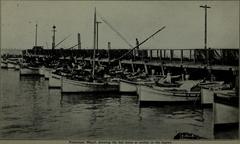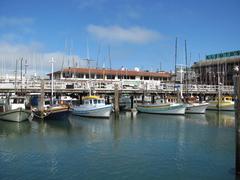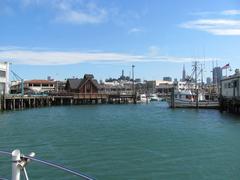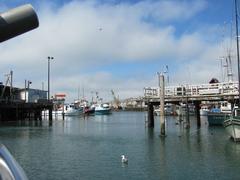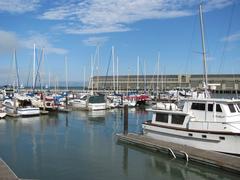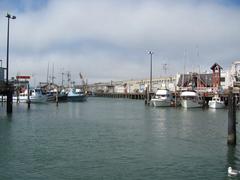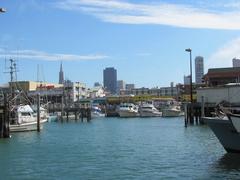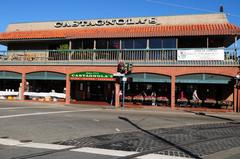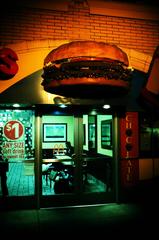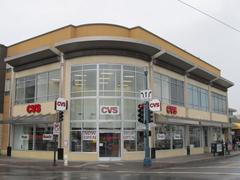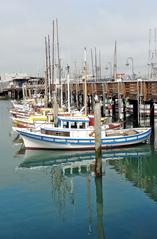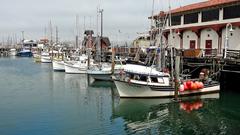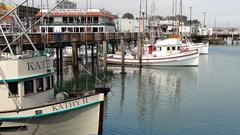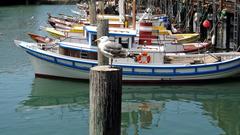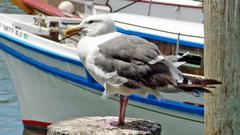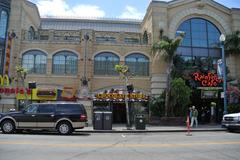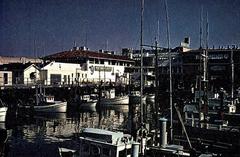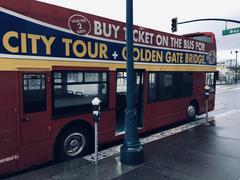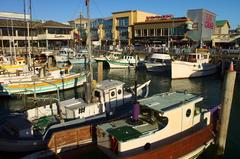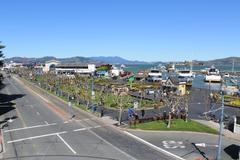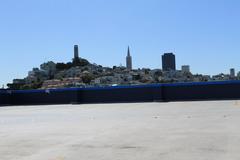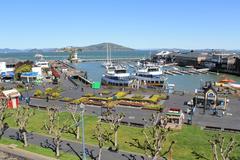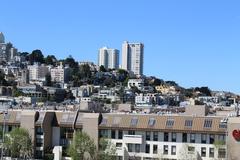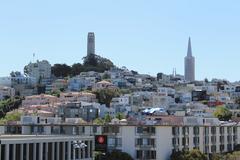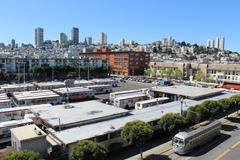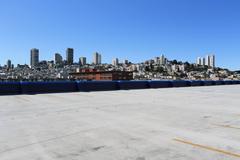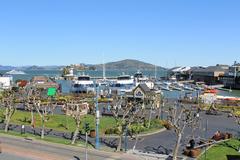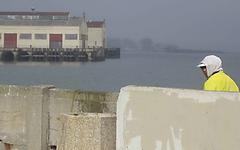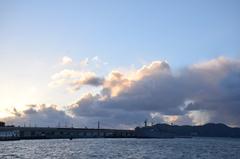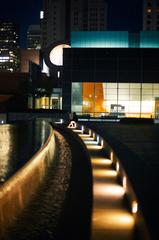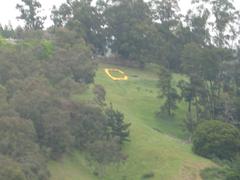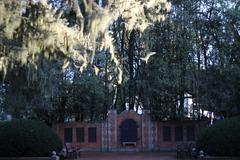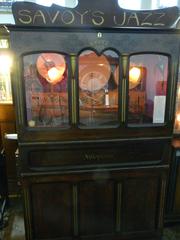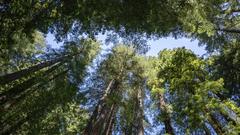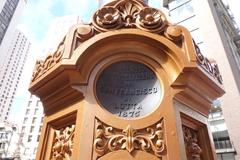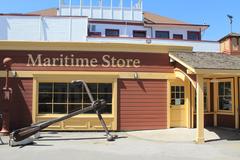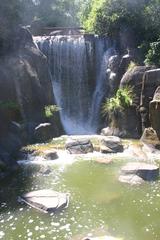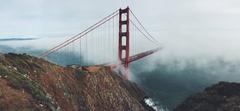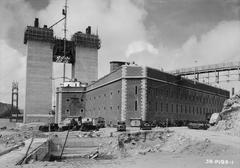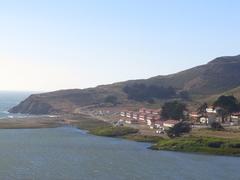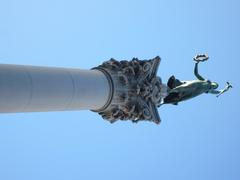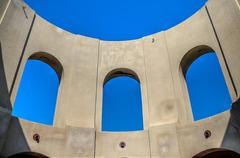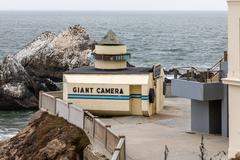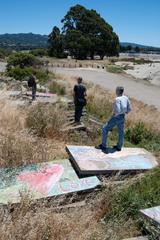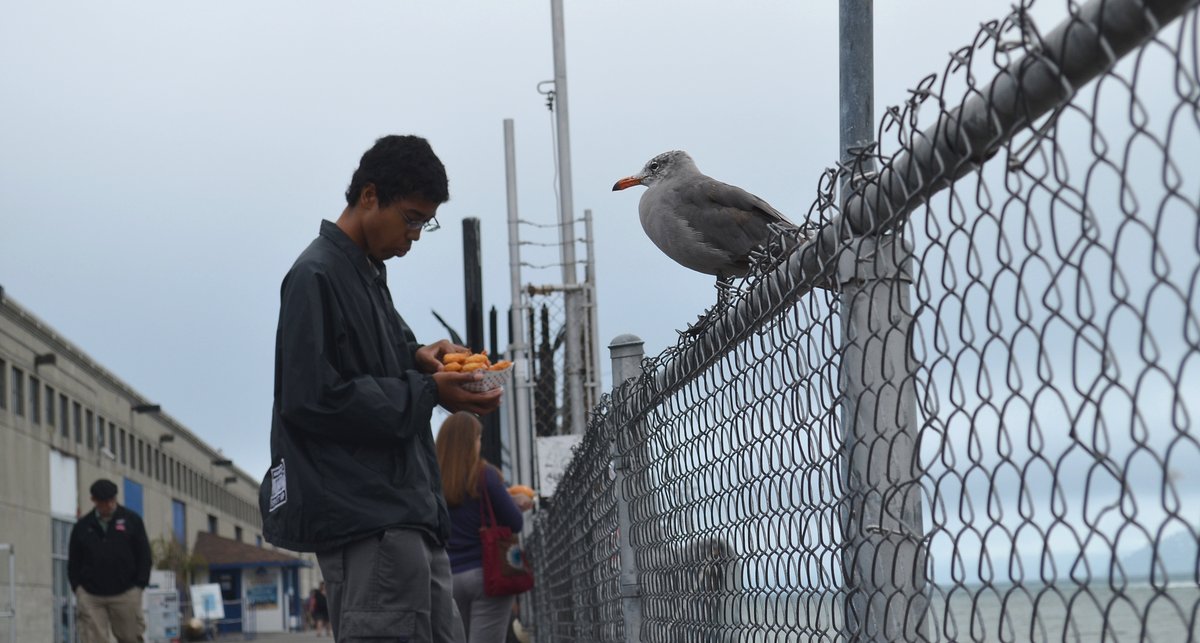
Guide to Visiting Fisherman’s Wharf in San Francisco
Date: 18/07/2024
Introduction
Fisherman’s Wharf in San Francisco is a vibrant and historical waterfront neighborhood that has evolved from a bustling fishing hub into one of the city’s most popular tourist destinations. This iconic area, known for its rich maritime history, diverse cultural influences, and lively atmosphere, attracts millions of visitors each year. The wharf’s origins trace back to the mid-19th century during the California Gold Rush, which brought an influx of Italian immigrants who established a thriving fishing industry. Over time, Fisherman’s Wharf has developed into a major economic engine for San Francisco, drawing over 12 million visitors annually (San Francisco Travel Association). The area is celebrated for its seafood restaurants, historic landmarks, and family-friendly attractions like Pier 39 and the Aquarium of the Bay. With its blend of historical significance, cultural diversity, and modern attractions, Fisherman’s Wharf offers something for everyone, making it a must-visit destination for tourists and locals alike.
Table of Contents
- [History of Fisherman’s Wharf](#history-of-fishermans-wharfhistory-of-fishermans-wharf)
- [Early Beginnings](#early-beginningsearly-beginnings)
- [Development of the Fishing Industry](#development-of-the-fishing-industrydevelopment-of-the-fishing-industry)
- [The Impact of World War II](#the-impact-of-world-war-iithe-impact-of-world-war-ii)
- [Post-War Transformation](#post-war-transformationpost-war-transformation)
- [Preservation and Modernization](#preservation-and-modernizationpreservation-and-modernization)
- [Visiting Fisherman’s Wharf](#visiting-fishermans-wharfvisiting-fishermans-wharf)
- [Visiting Hours and Tickets](#visiting-hours-and-ticketsvisiting-hours-and-tickets)
- [Travel Tips for Fisherman’s Wharf](#travel-tips-for-fishermans-wharftravel-tips-for-fishermans-wharf)
- [Nearby Attractions](#nearby-attractionsnearby-attractions)
- [Accessibility Information](#accessibility-informationaccessibility-information)
- [Special Events and Guided Tours](#special-events-and-guided-toursspecial-events-and-guided-tours)
- [Photographic Spots at Fisherman’s Wharf](#photographic-spots-at-fishermans-wharfphotographic-spots-at-fishermans-wharf)
- [Notable Historical Landmarks](#notable-historical-landmarksnotable-historical-landmarks)
- [FAQ](#faqfaq)
- [Conclusion](#conclusionconclusion)
History of Fisherman’s Wharf
Early Beginnings
Fisherman’s Wharf, located on the northern waterfront of San Francisco, has a rich history that dates back to the mid-19th century. The area began to develop during the California Gold Rush of 1849, which brought an influx of Italian immigrants. These immigrants, many of whom were fishermen, settled in the area and began to establish a thriving fishing industry. The wharf quickly became a bustling hub for the fishing community, with Italian fishermen using traditional feluccas, small wooden boats, to catch fish in the San Francisco Bay.
Development of the Fishing Industry
By the late 19th and early 20th centuries, Fisherman’s Wharf had become the center of San Francisco’s fishing industry. The introduction of larger fishing vessels and advanced fishing techniques allowed for greater catches, which in turn led to the growth of the local economy. The wharf was lined with fish markets, canneries, and seafood restaurants, making it a vital part of the city’s commercial landscape.
The Dungeness crab became a significant catch for the fishermen at Fisherman’s Wharf. The crab season, which typically runs from November to June, brought in large hauls that were sold fresh at the markets or cooked and served at the many seafood eateries that began to populate the area. The popularity of Dungeness crab helped to cement Fisherman’s Wharf’s reputation as a premier destination for seafood.
The Impact of World War II
World War II had a profound impact on Fisherman’s Wharf. The war effort required vast amounts of food supplies, and the fishing industry at the wharf played a crucial role in meeting these demands. Many fishermen enlisted in the military, and those who remained worked tirelessly to provide fish and other seafood for the troops. The war also brought technological advancements to the fishing industry, including improved navigation and communication equipment, which further boosted productivity.
Post-War Transformation
After World War II, Fisherman’s Wharf began to transform from a primarily industrial area into a major tourist destination. The post-war economic boom and the rise of automobile travel made it easier for people to visit San Francisco, and Fisherman’s Wharf quickly became a popular attraction. The area saw the development of new tourist-oriented businesses, including souvenir shops, restaurants, and entertainment venues.
One of the most significant developments during this period was the opening of the Wax Museum at Fisherman’s Wharf in 1963. The museum, which featured lifelike wax figures of historical and contemporary figures, became a major draw for tourists and helped to solidify the wharf’s status as a must-visit destination in San Francisco.
Preservation and Modernization
In the latter half of the 20th century, efforts were made to preserve the historical character of Fisherman’s Wharf while also modernizing the area to accommodate the growing number of visitors. The San Francisco Maritime National Historical Park, established in 1988, played a key role in these efforts. The park includes several historic ships, a visitor center, and the Aquatic Park Historic District, all of which help to educate visitors about the maritime history of San Francisco and Fisherman’s Wharf.
Visiting Fisherman’s Wharf
Visiting Hours and Tickets
Fisherman’s Wharf is generally open to the public 24 hours a day, though individual businesses and attractions may have specific operating hours. It’s advisable to check the visiting hours of specific attractions before planning your trip. Most attractions at Fisherman’s Wharf do not require an entrance fee, but tickets are needed for specific tours and experiences. For example, tickets for the Wax Museum or guided tours can be purchased online or at the respective venues.
Travel Tips for Fisherman’s Wharf
- Best Times to Visit: The best time to visit Fisherman’s Wharf is during the early morning or late afternoon to avoid the peak tourist crowds.
- Transportation: The Wharf is accessible via public transportation, including Muni buses, cable cars, and the historic F-line streetcars. Parking can be challenging, so using public transport is recommended.
- Weather: San Francisco weather can be unpredictable, so dress in layers to stay comfortable throughout your visit.
Nearby Attractions
Fisherman’s Wharf is close to several other notable San Francisco attractions:
- Pier 39: Famous for its sea lions, dining options, and entertainment.
- Alcatraz Island: Accessible via ferry, offering tours of the historic prison.
- Ghirardelli Square: Known for its chocolate shops and waterfront views.
- Aquarium of the Bay: Located at Pier 39, featuring marine life from the San Francisco Bay.
Accessibility Information
Fisherman’s Wharf is generally accessible to visitors with disabilities. Most areas and attractions have ramps, elevators, and accessible restrooms. Specific services and accommodations can be checked on the official website of the attraction you plan to visit.
Special Events and Guided Tours
Fisherman’s Wharf hosts several special events throughout the year, such as the annual Blessing of the Fleet and various seafood festivals. Guided tours are available, offering insights into the history and workings of the Wharf. Popular tours include walking tours, Segway tours, and boat tours around the bay.
Photographic Spots at Fisherman’s Wharf
- Golden Gate Bridge Views: Capturing the iconic bridge from various spots along the Wharf.
- Sea Lions at Pier 39: A popular spot for snapping pictures of these playful animals.
- Historic Ships: The ships at the San Francisco Maritime National Historical Park offer great photo opportunities.
Notable Historical Landmarks
Several historical landmarks at Fisherman’s Wharf offer a glimpse into its storied past. The Hyde Street Pier, part of the San Francisco Maritime National Historical Park, features a collection of historic ships, including the Balclutha, a 19th-century sailing ship that once transported goods around the world. The pier also offers educational programs and exhibits that highlight the maritime history of San Francisco.
Another notable landmark is the Fisherman’s and Seamen’s Memorial Chapel, located at Pier 45. The chapel, dedicated in 1955, serves as a tribute to the fishermen and seamen who have lost their lives at sea. It is a place of reflection and remembrance for the local fishing community and visitors alike.
FAQ
- What are the best times to visit Fisherman’s Wharf? The best times to visit are early morning or late afternoon to avoid peak crowds.
- Are there guided tours available? Yes, guided tours, including walking, Segway, and boat tours, are available.
- What are the visiting hours? The Wharf is open 24 hours, but individual attractions may have specific hours.
- How can I buy tickets? Tickets for specific attractions can be purchased online or at the venue.
- Is Fisherman’s Wharf accessible? Yes, most areas and attractions are accessible to visitors with disabilities.
Conclusion
Fisherman’s Wharf’s rich history, from its early days as a fishing hub to its transformation into a major tourist destination, reflects the dynamic and ever-evolving nature of San Francisco. The area’s historical landmarks, cultural events, and ongoing preservation efforts ensure that the legacy of Fisherman’s Wharf will continue to be celebrated for generations to come.
For more detailed information, you can visit the San Francisco Maritime National Historical Park and the Fisherman’s Wharf Community Benefit District.
